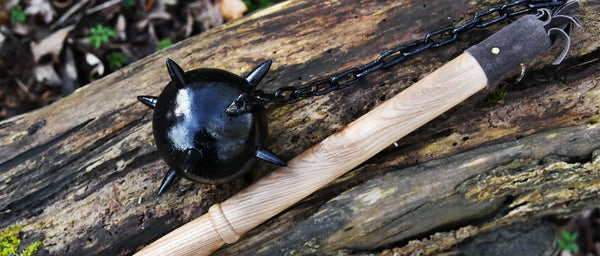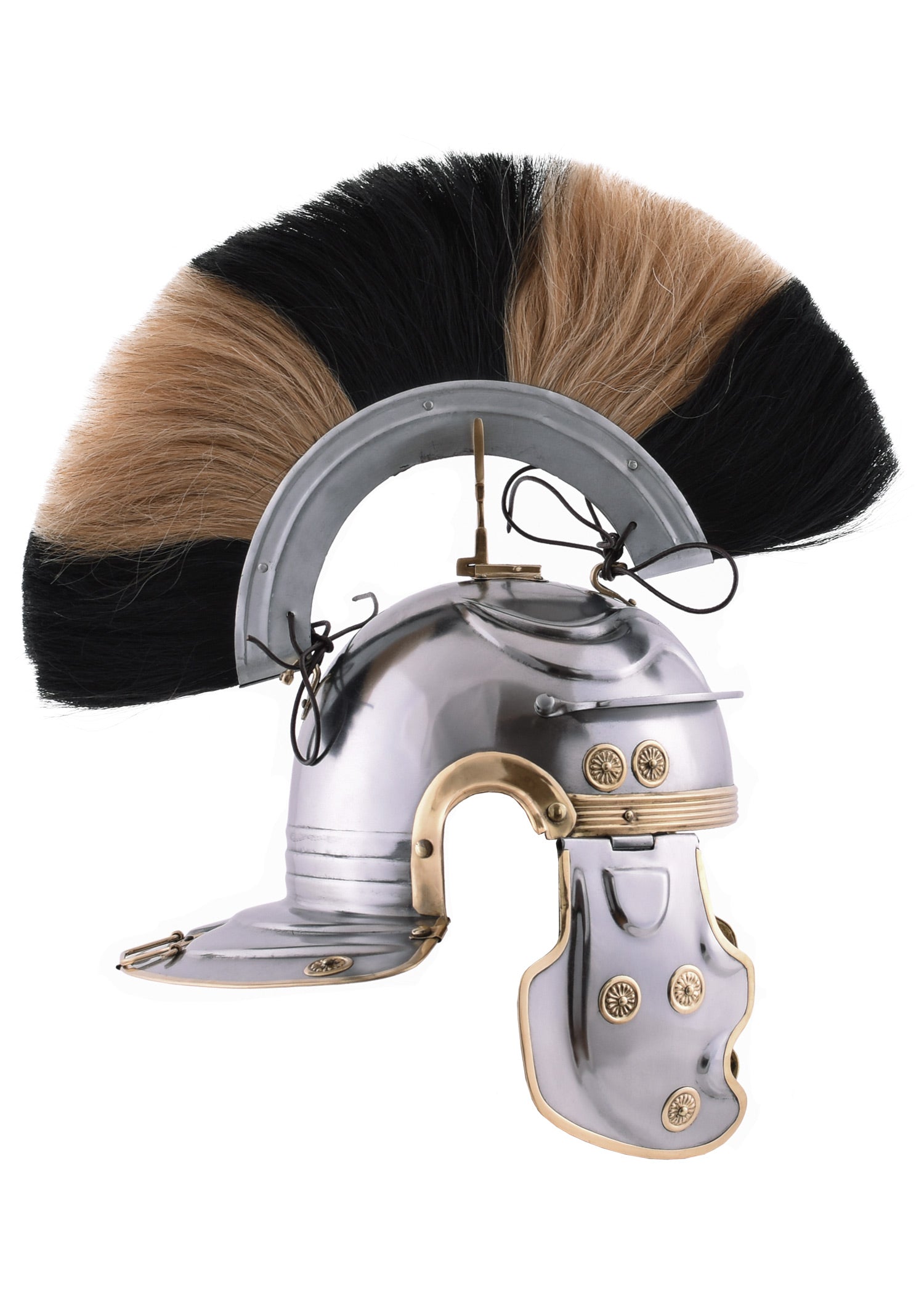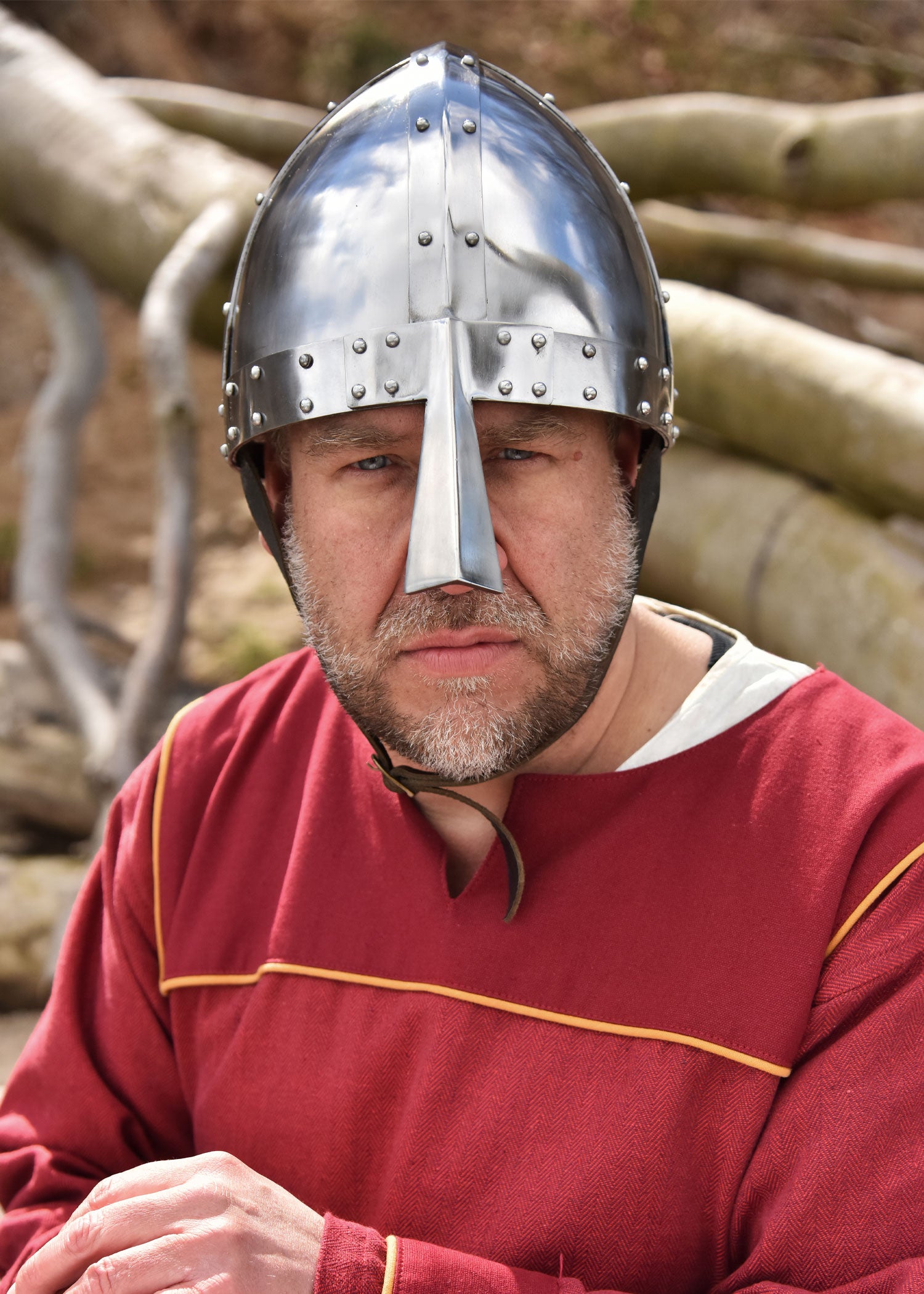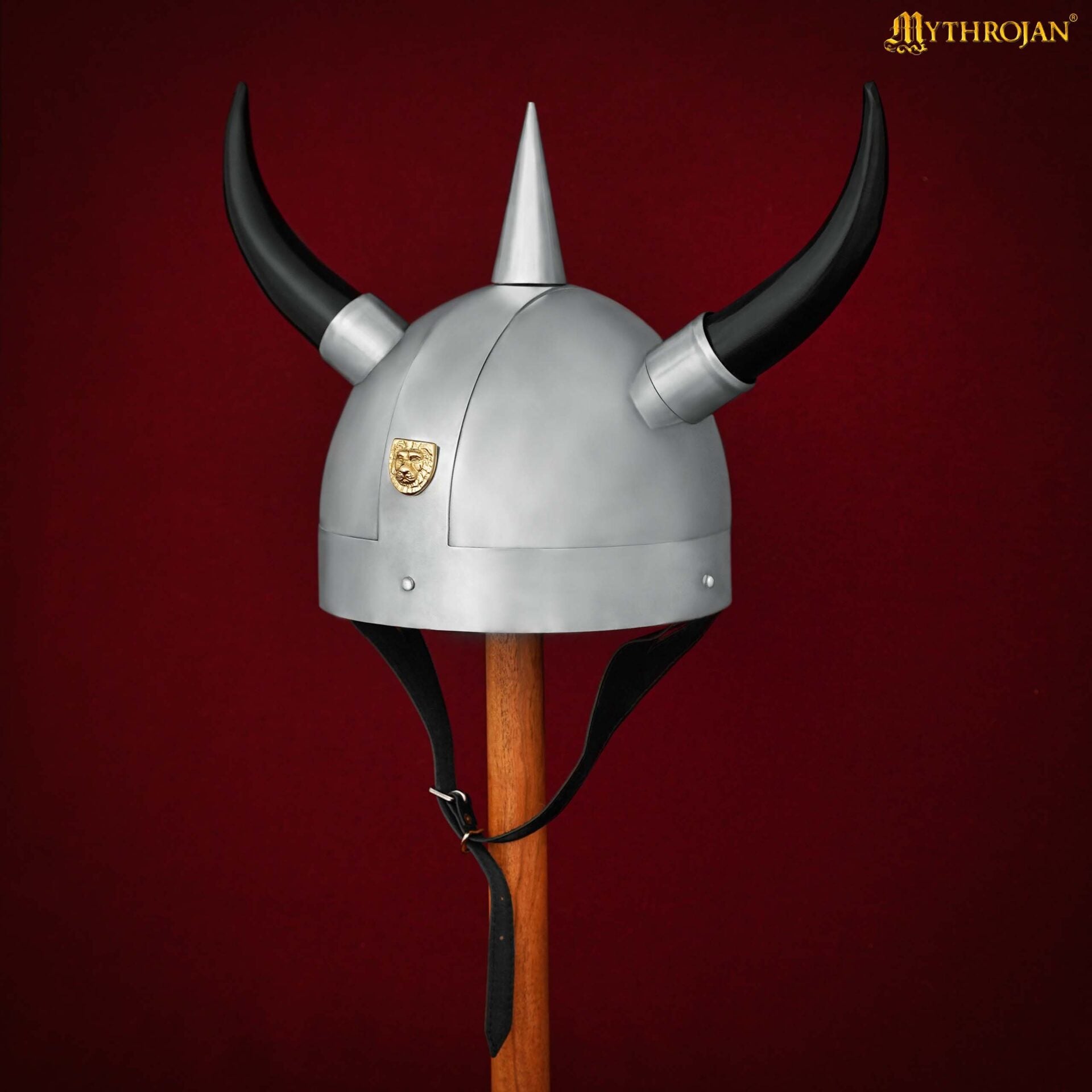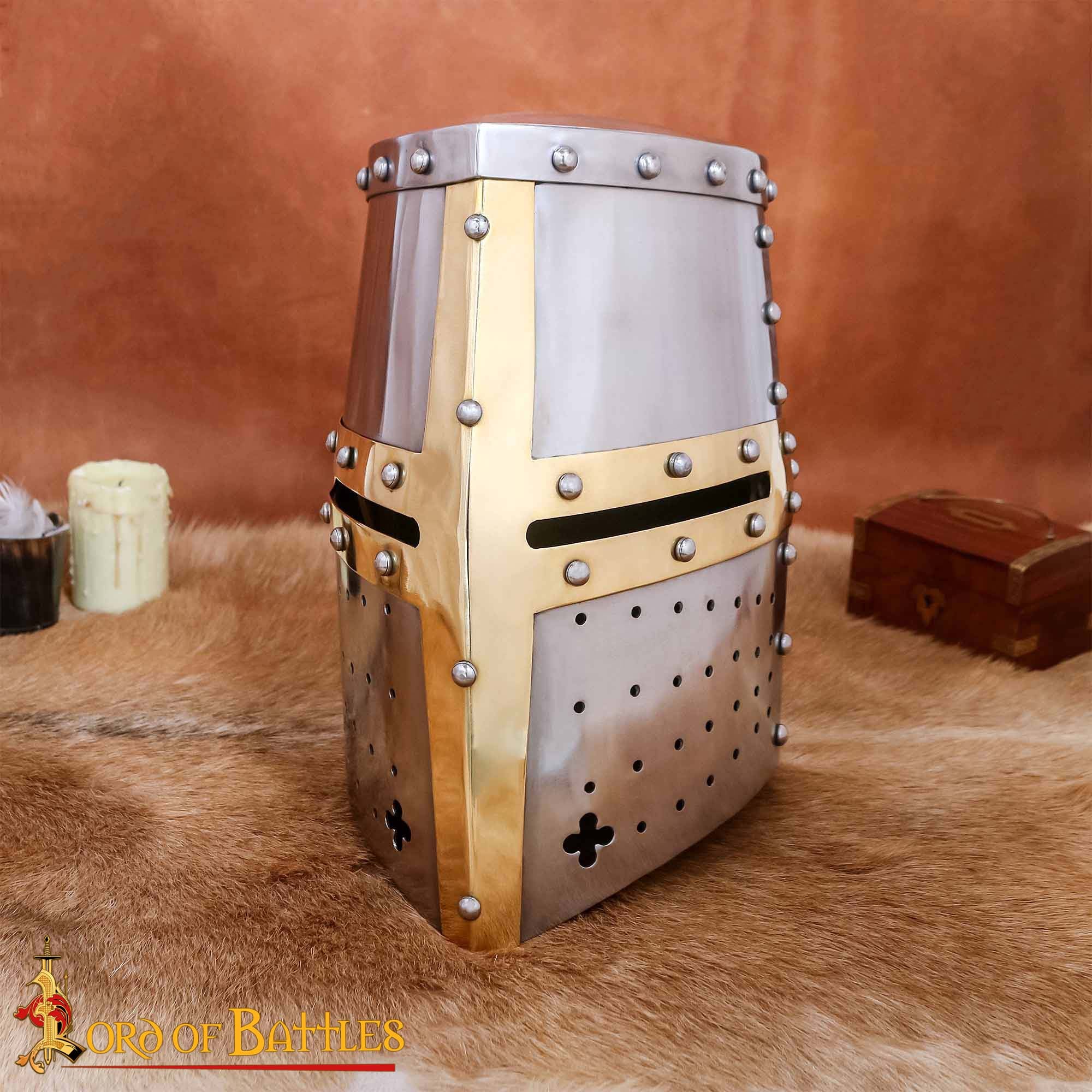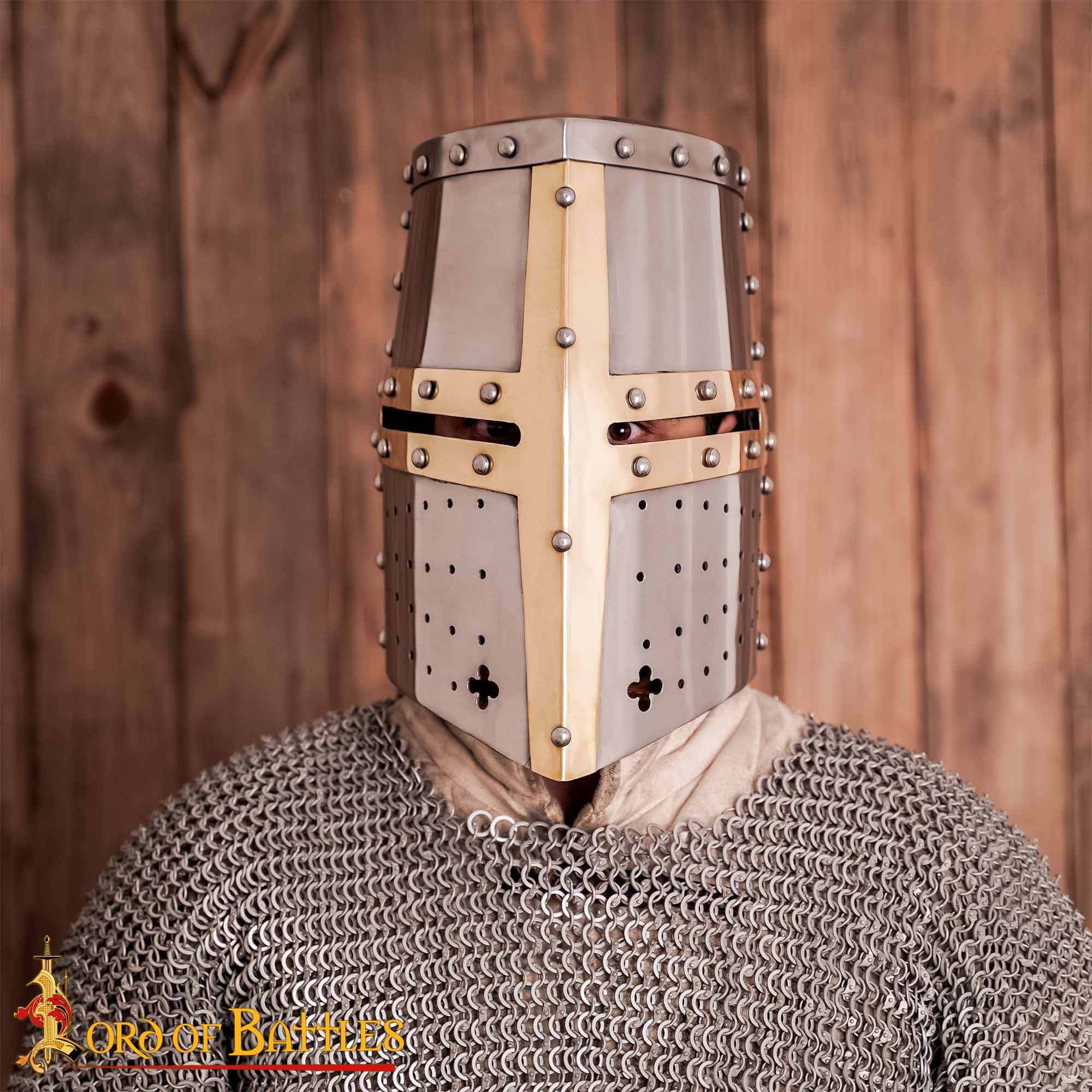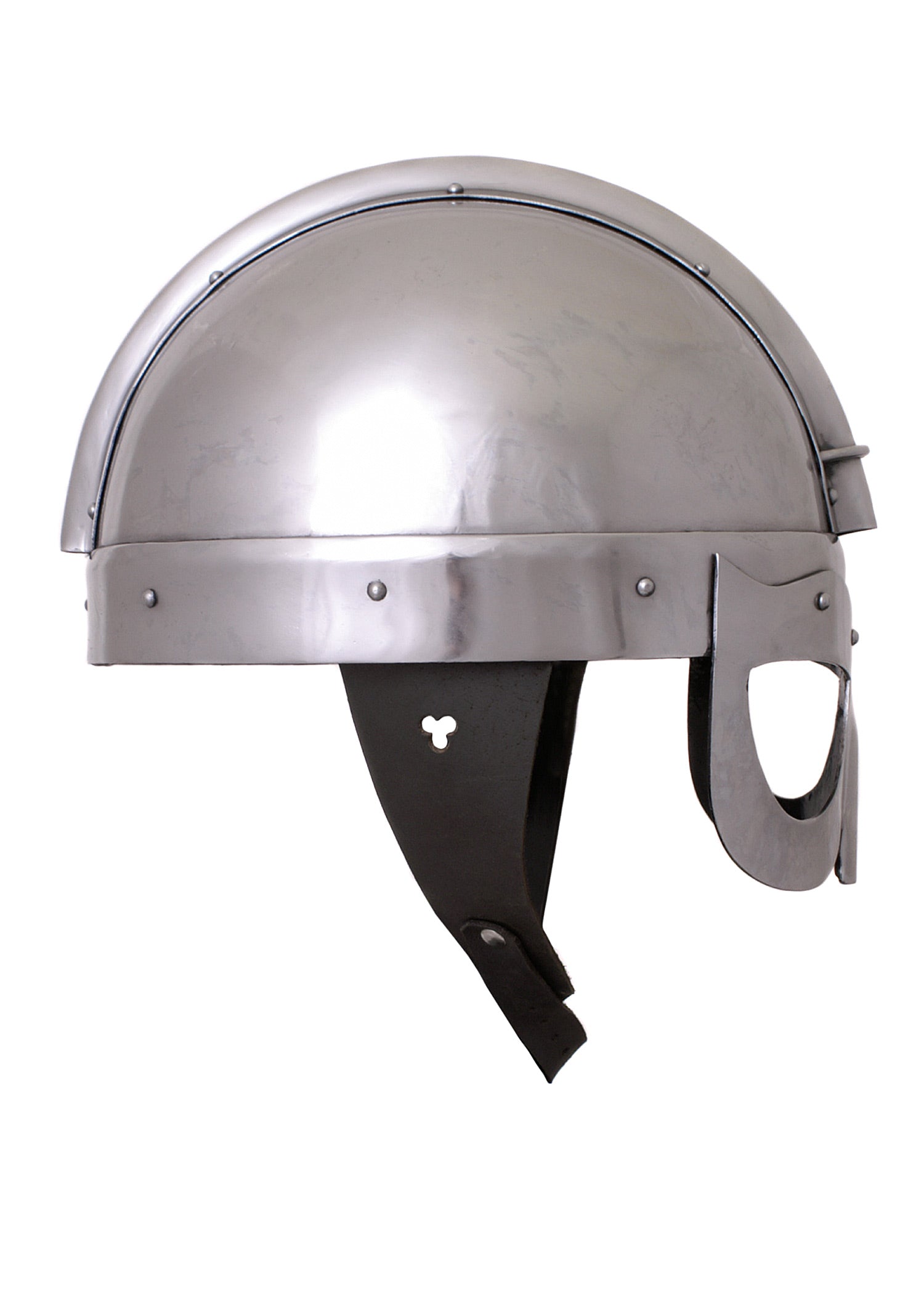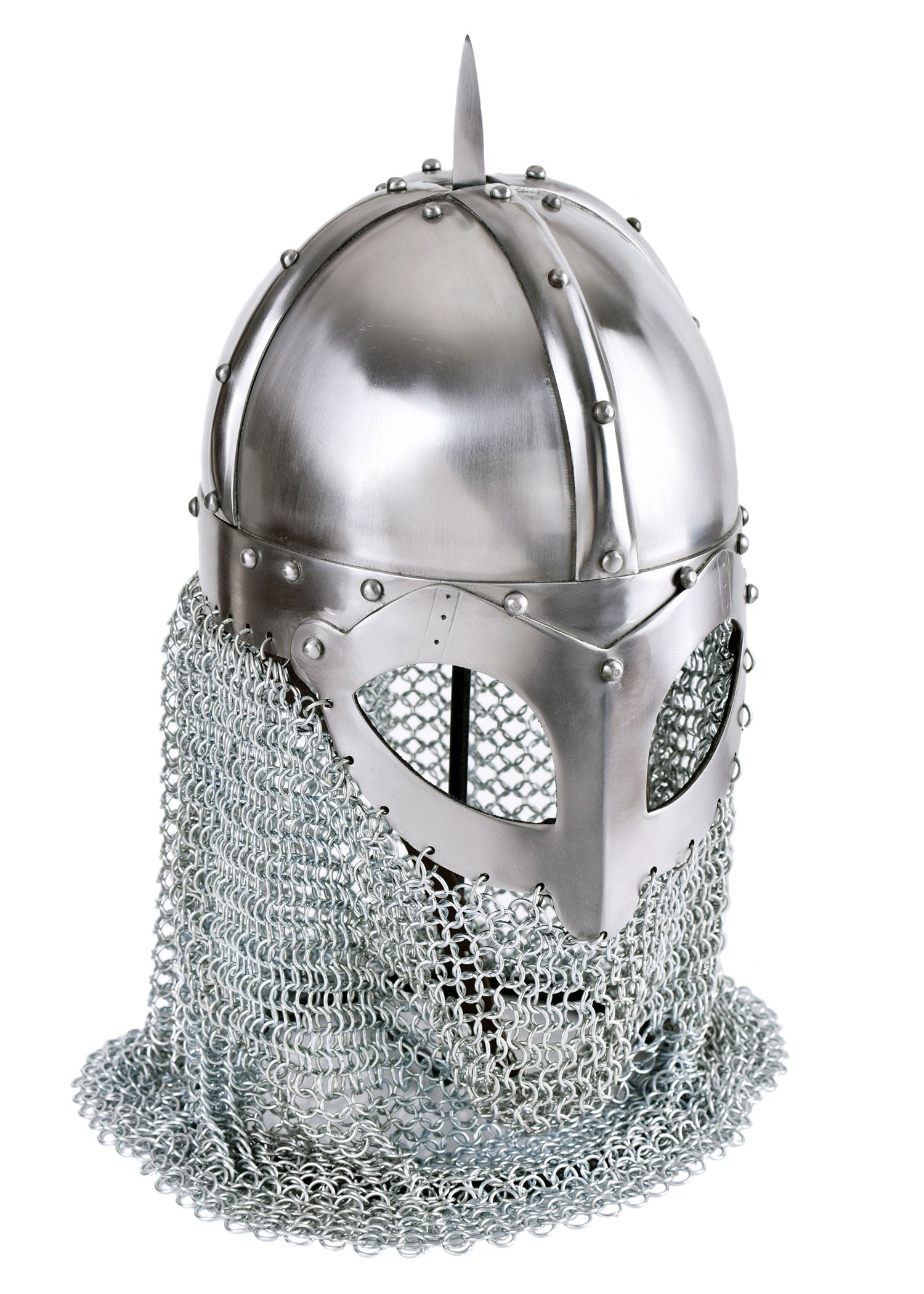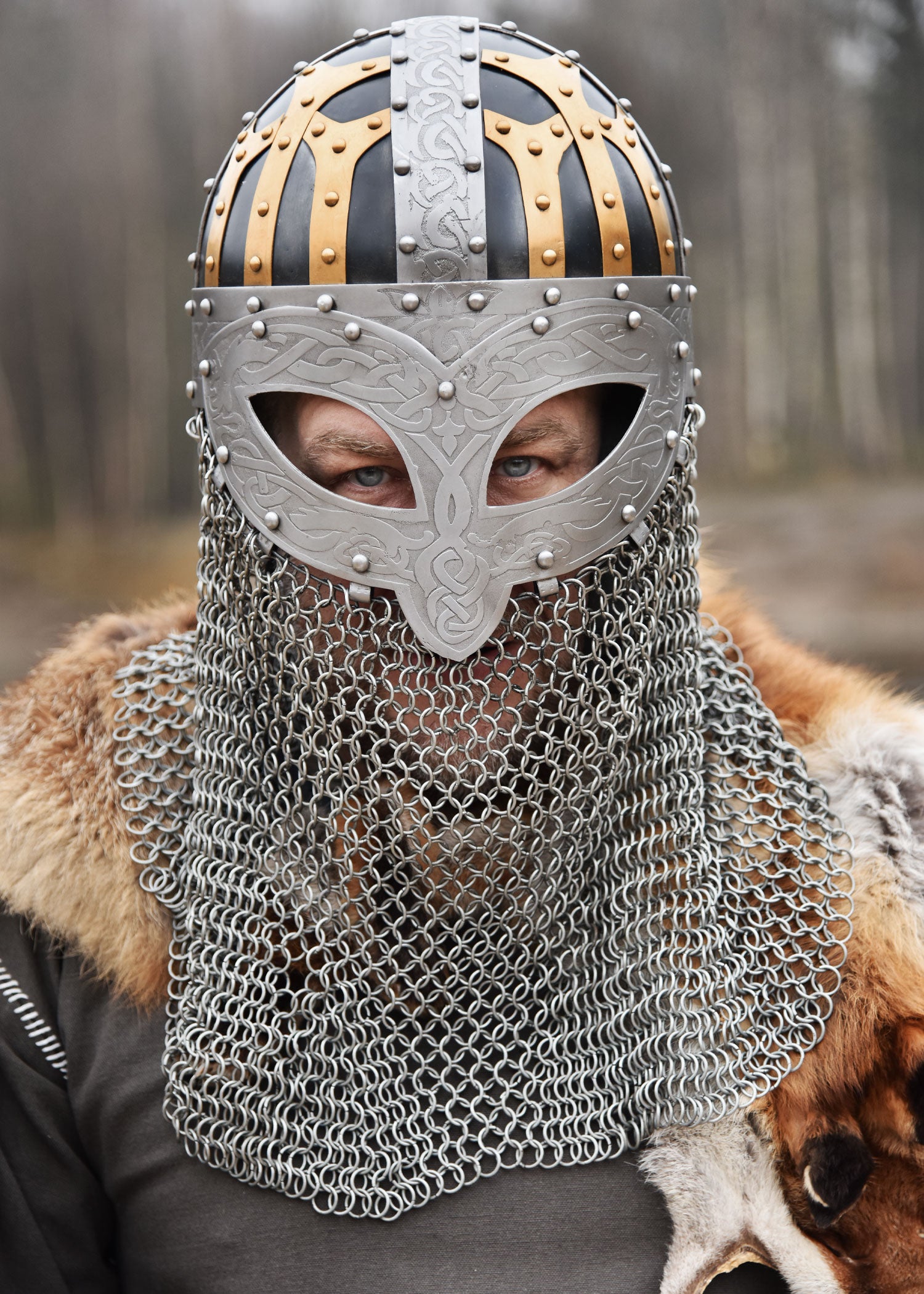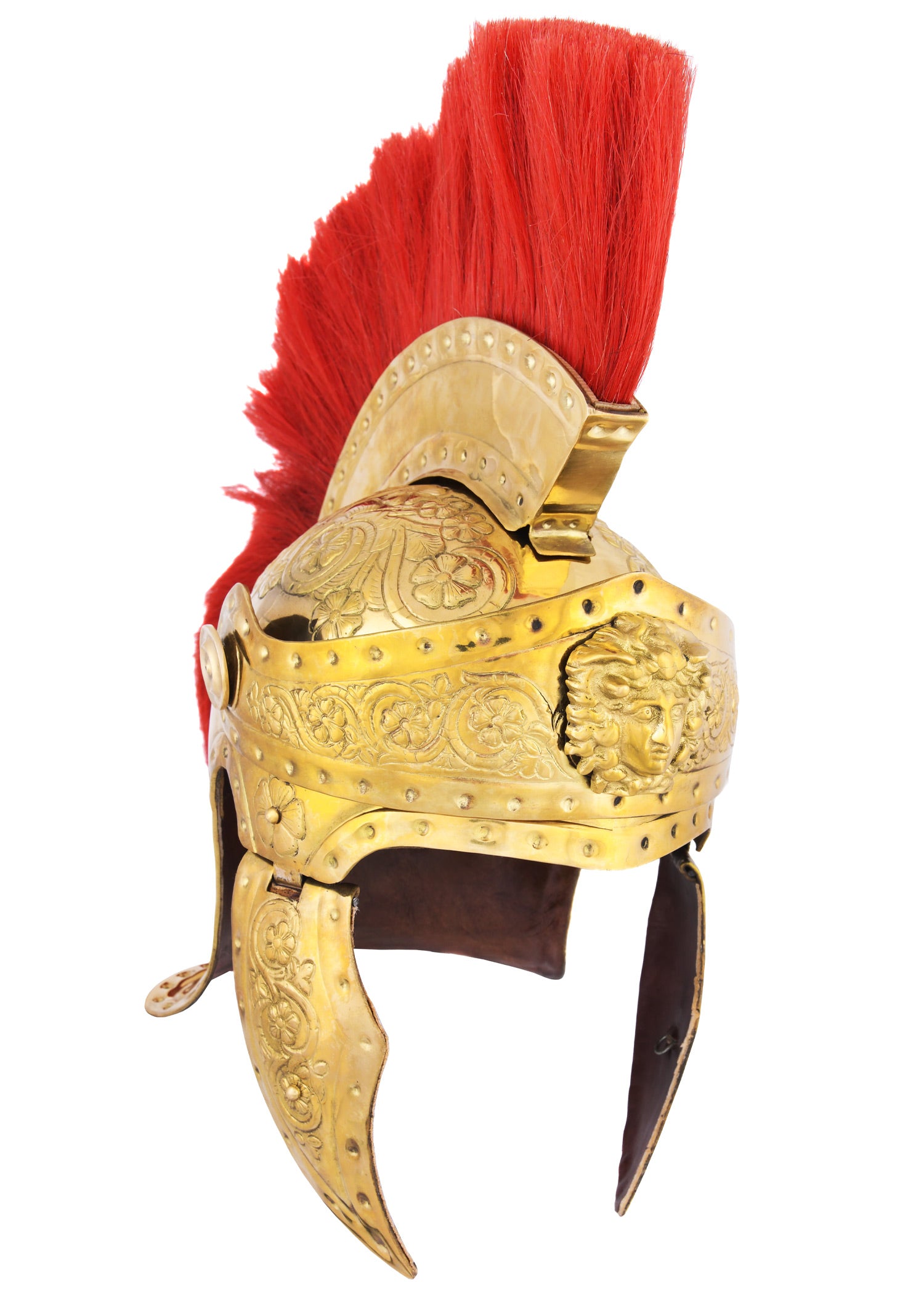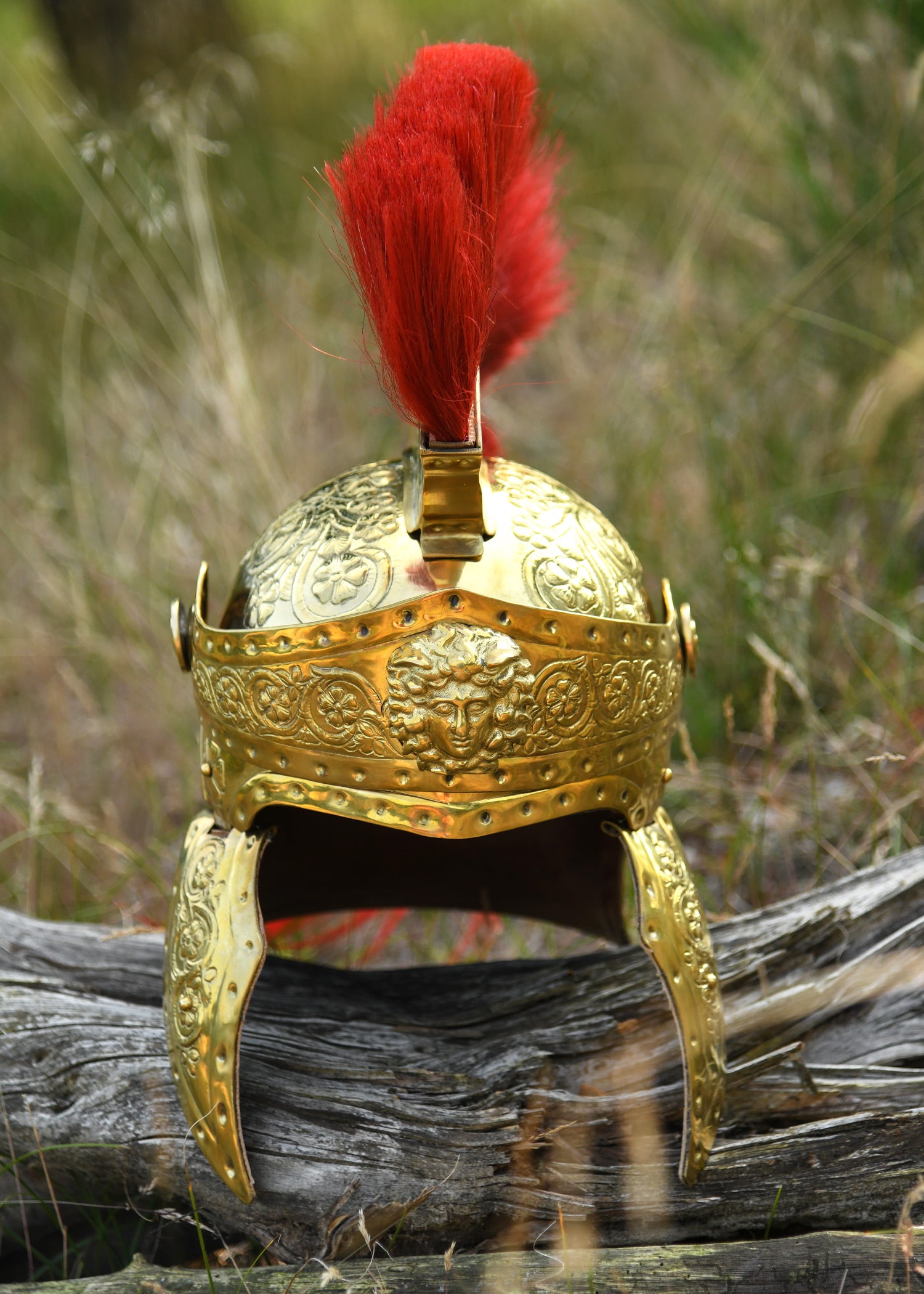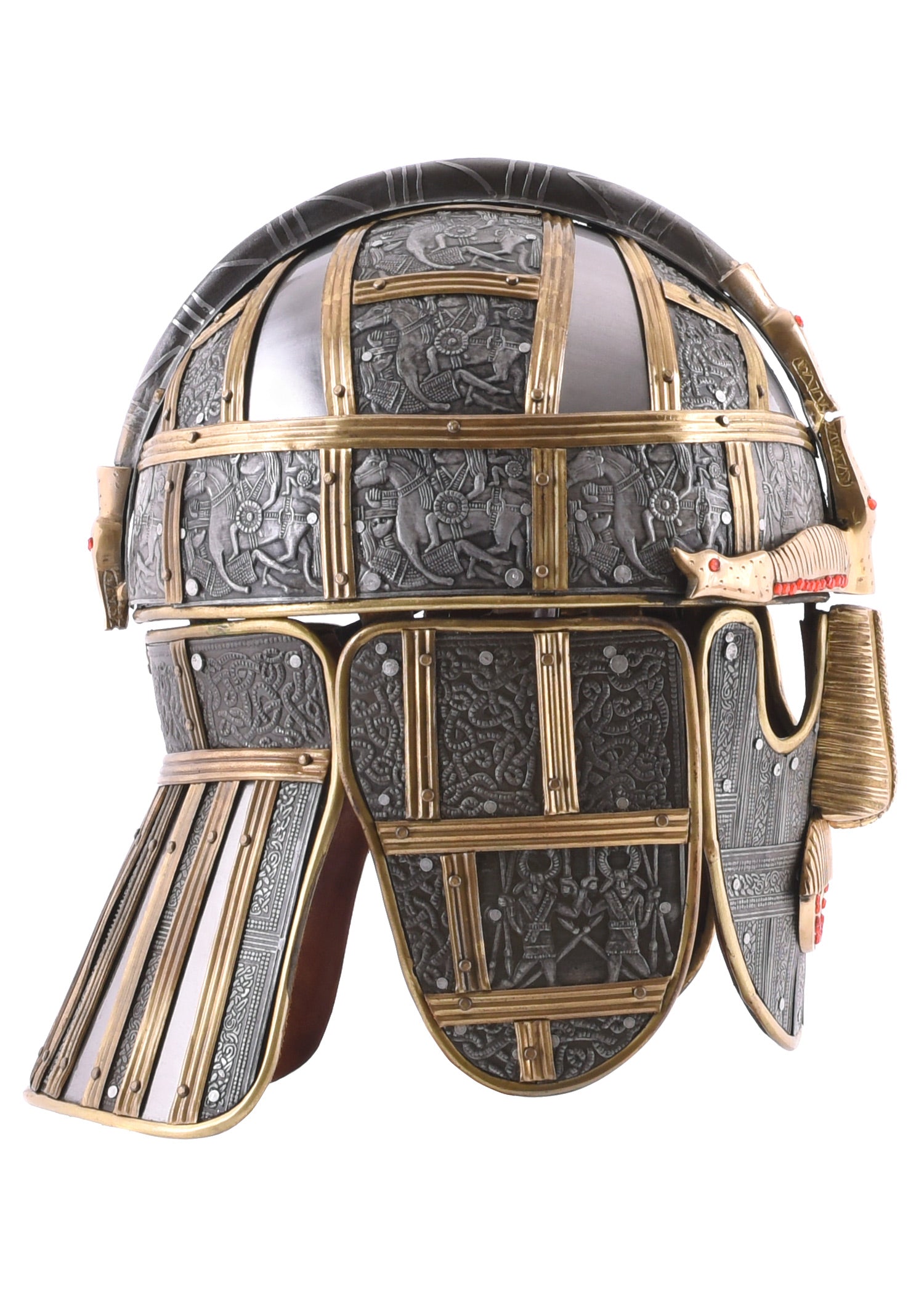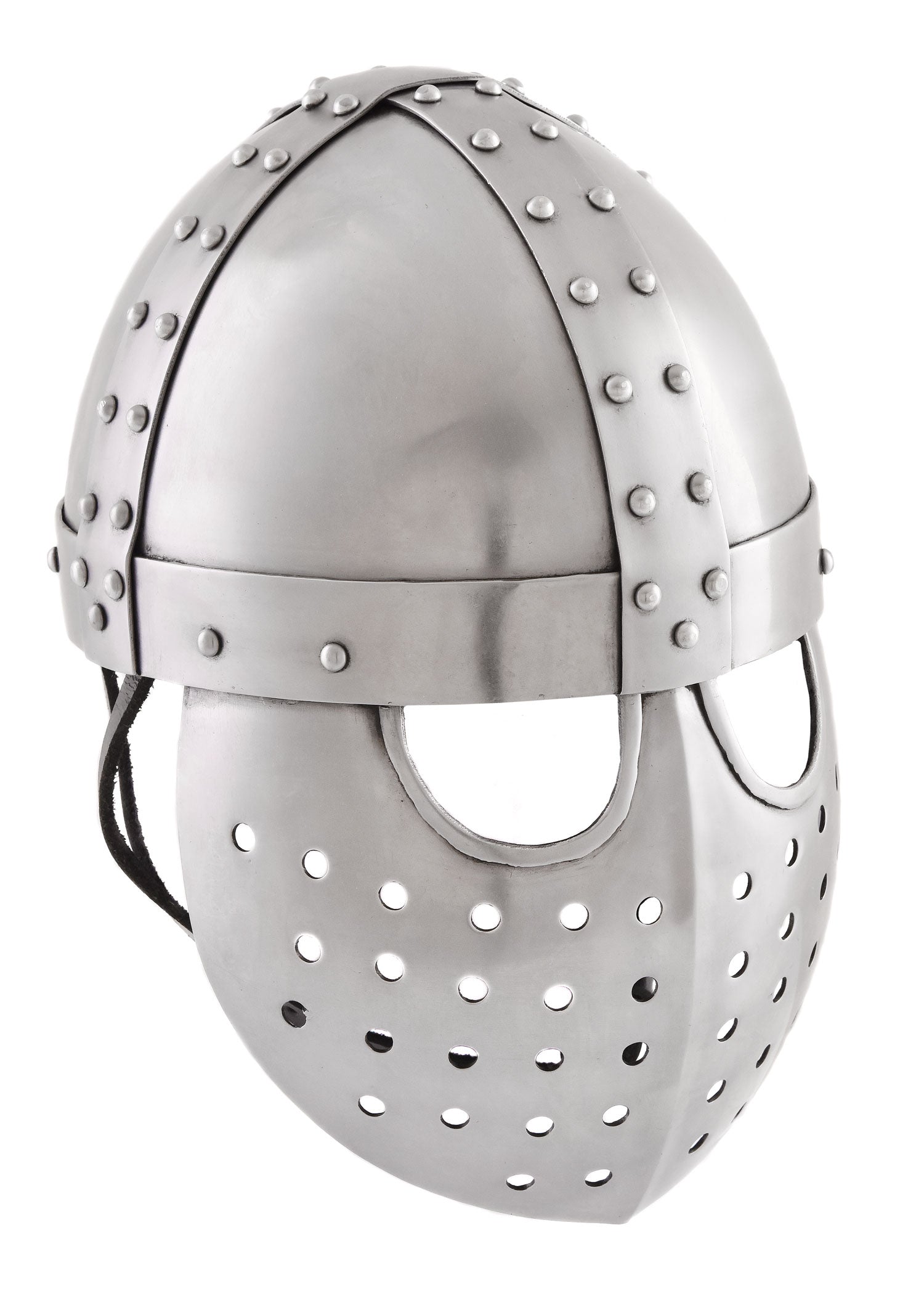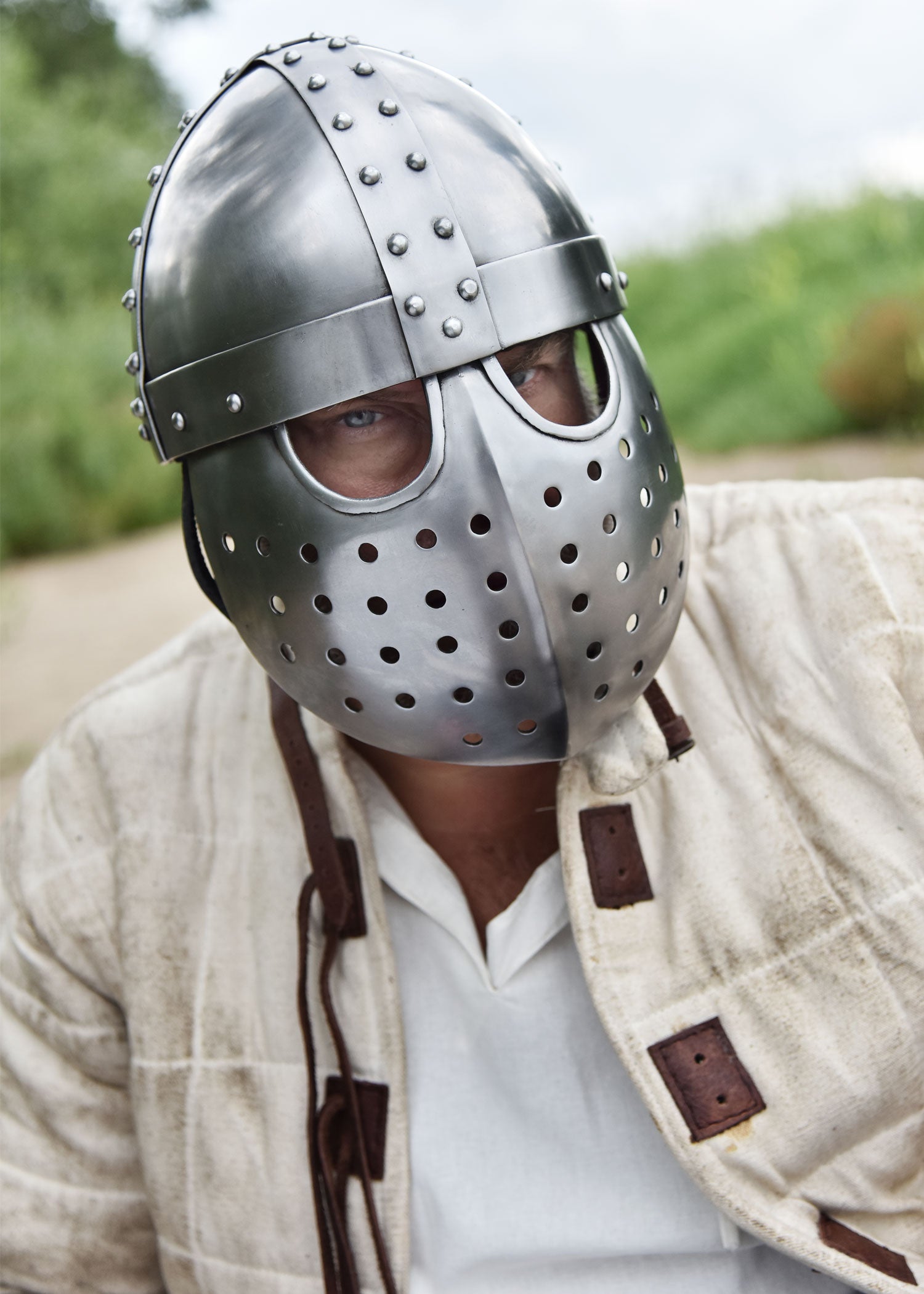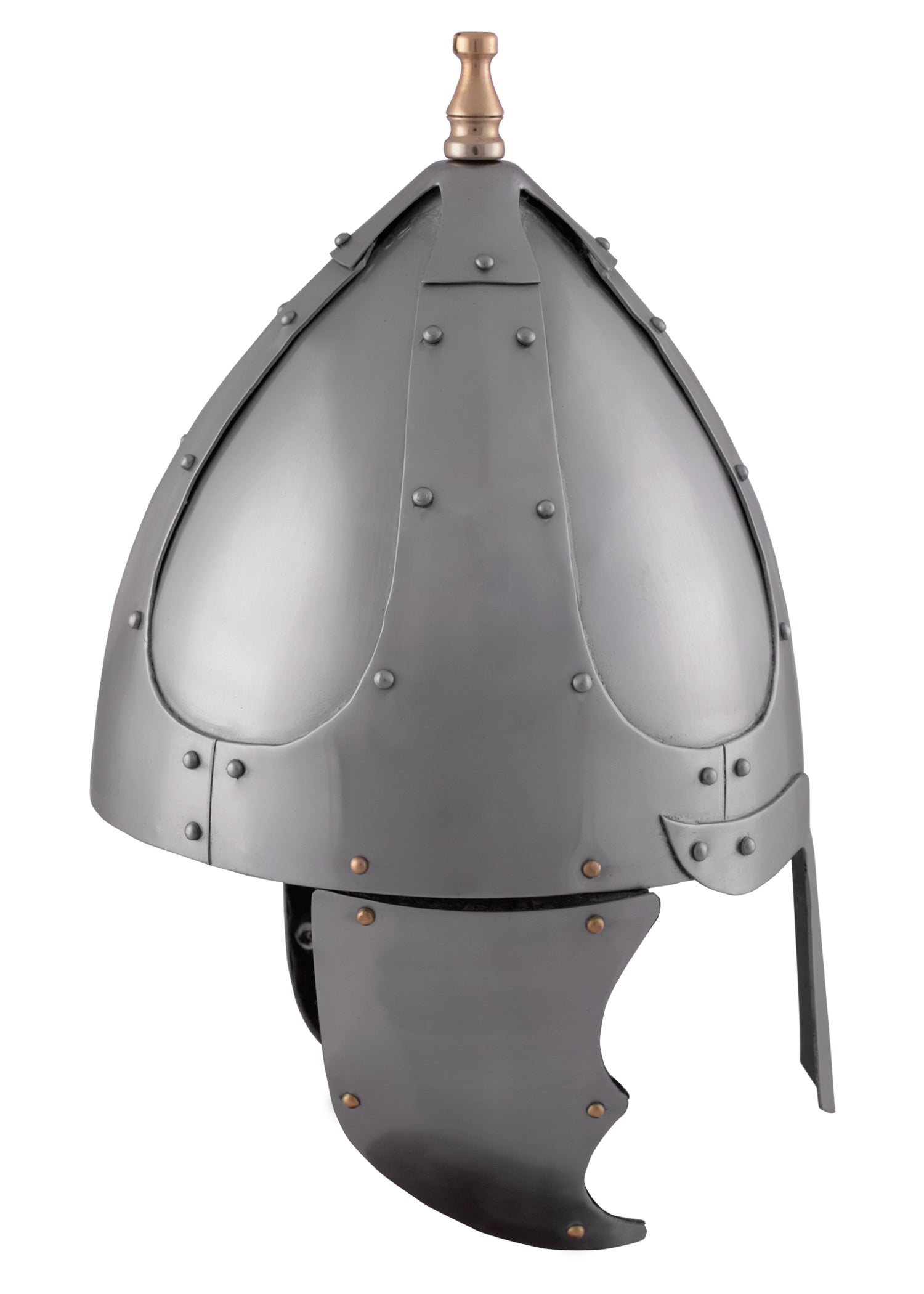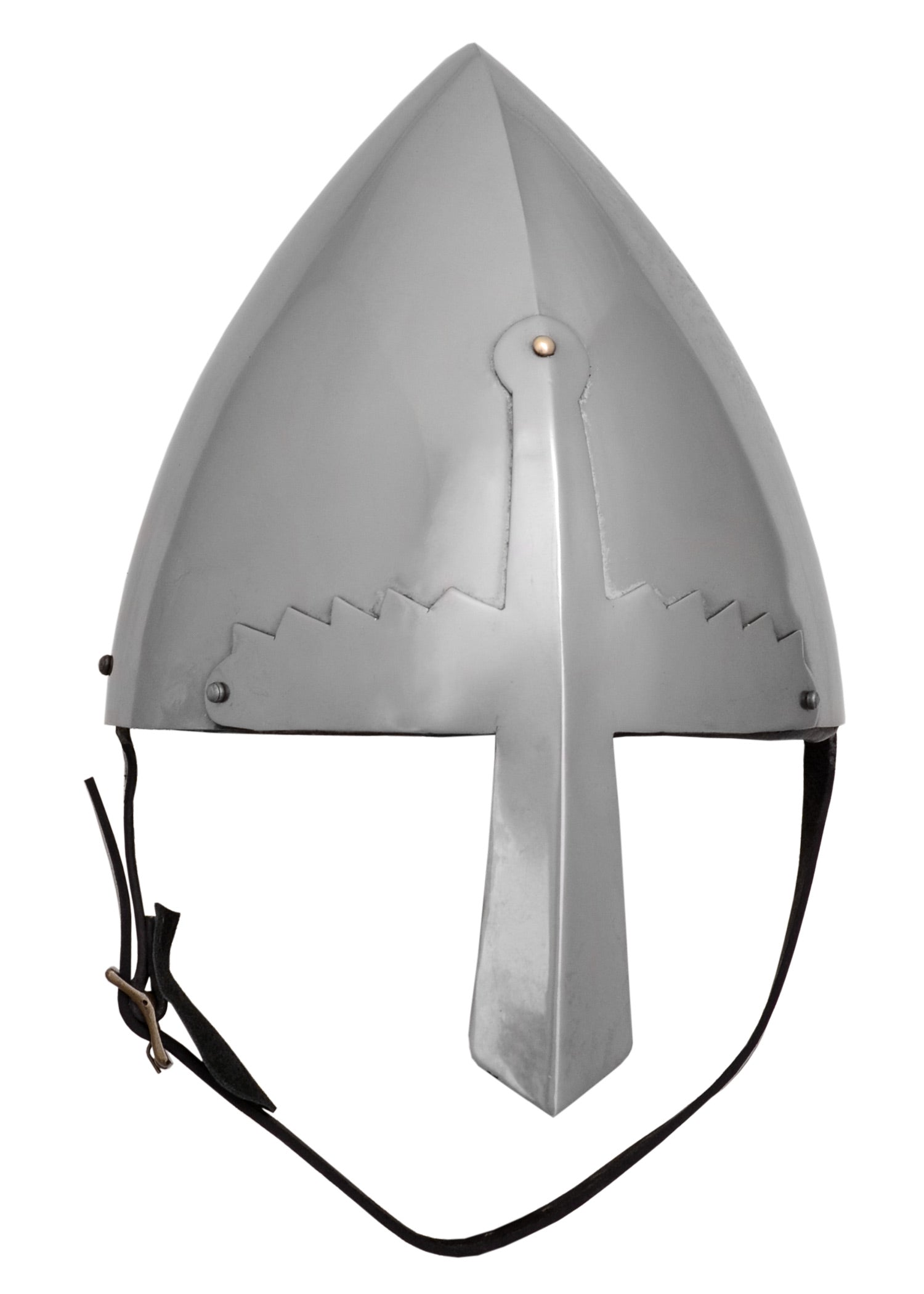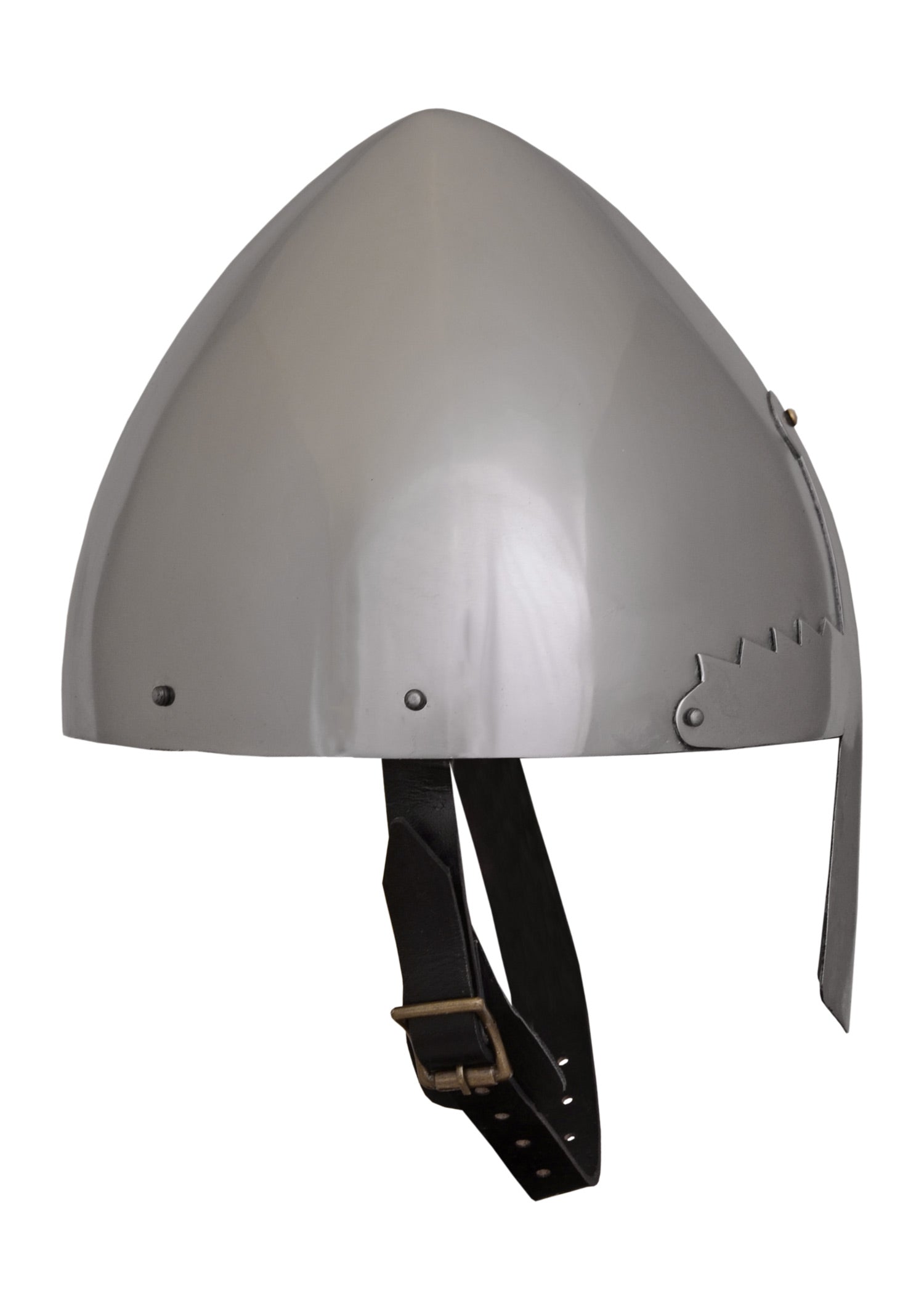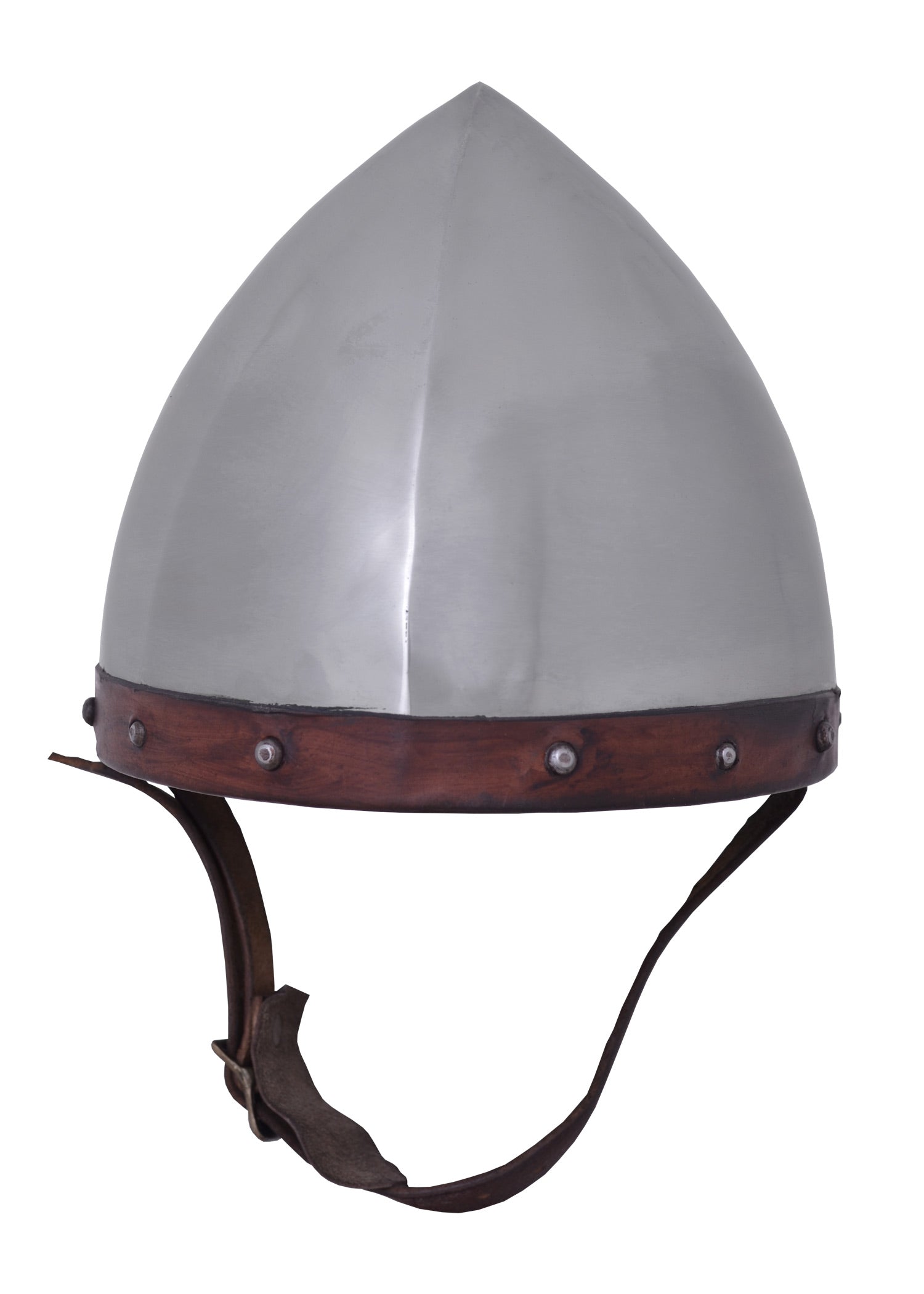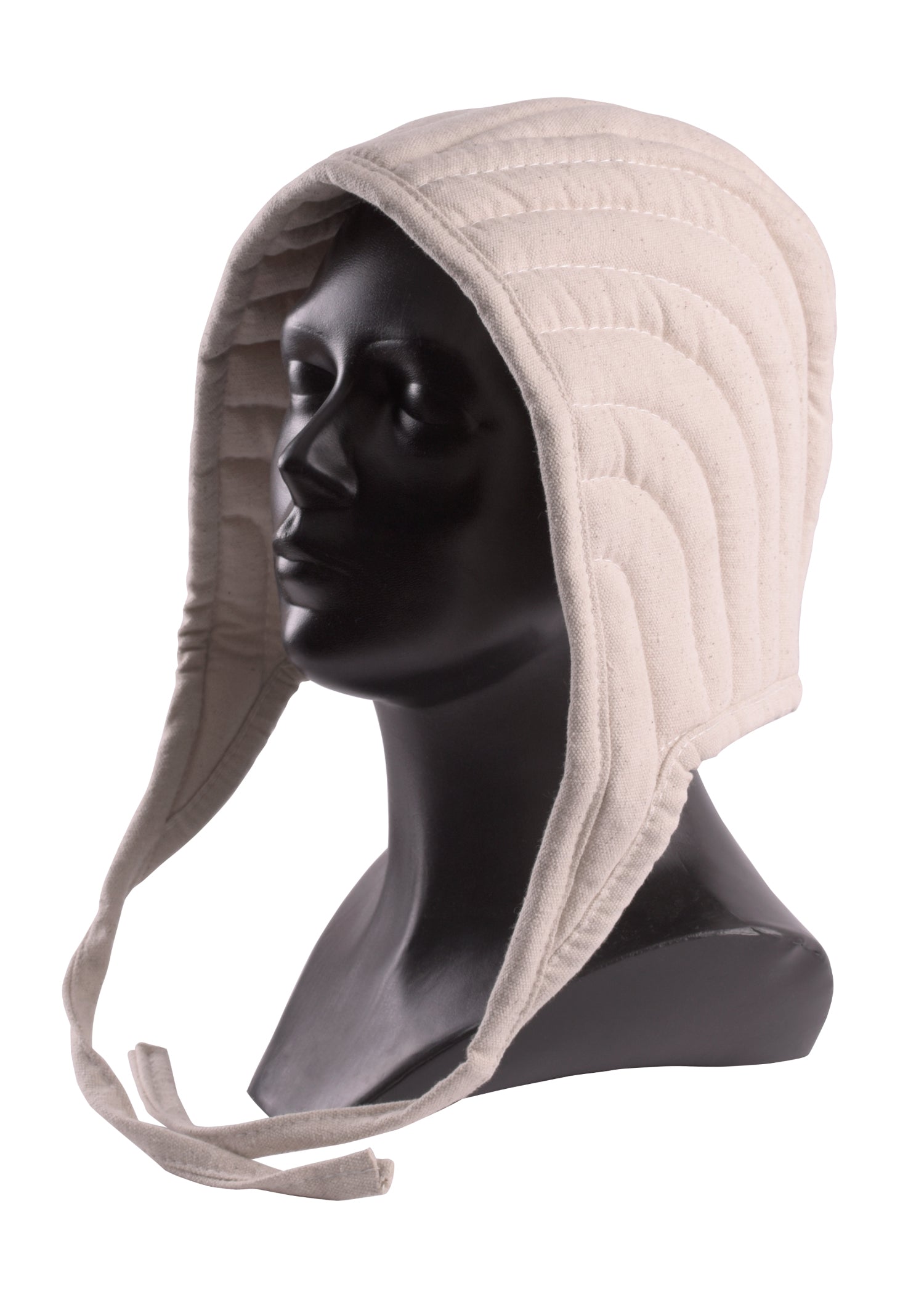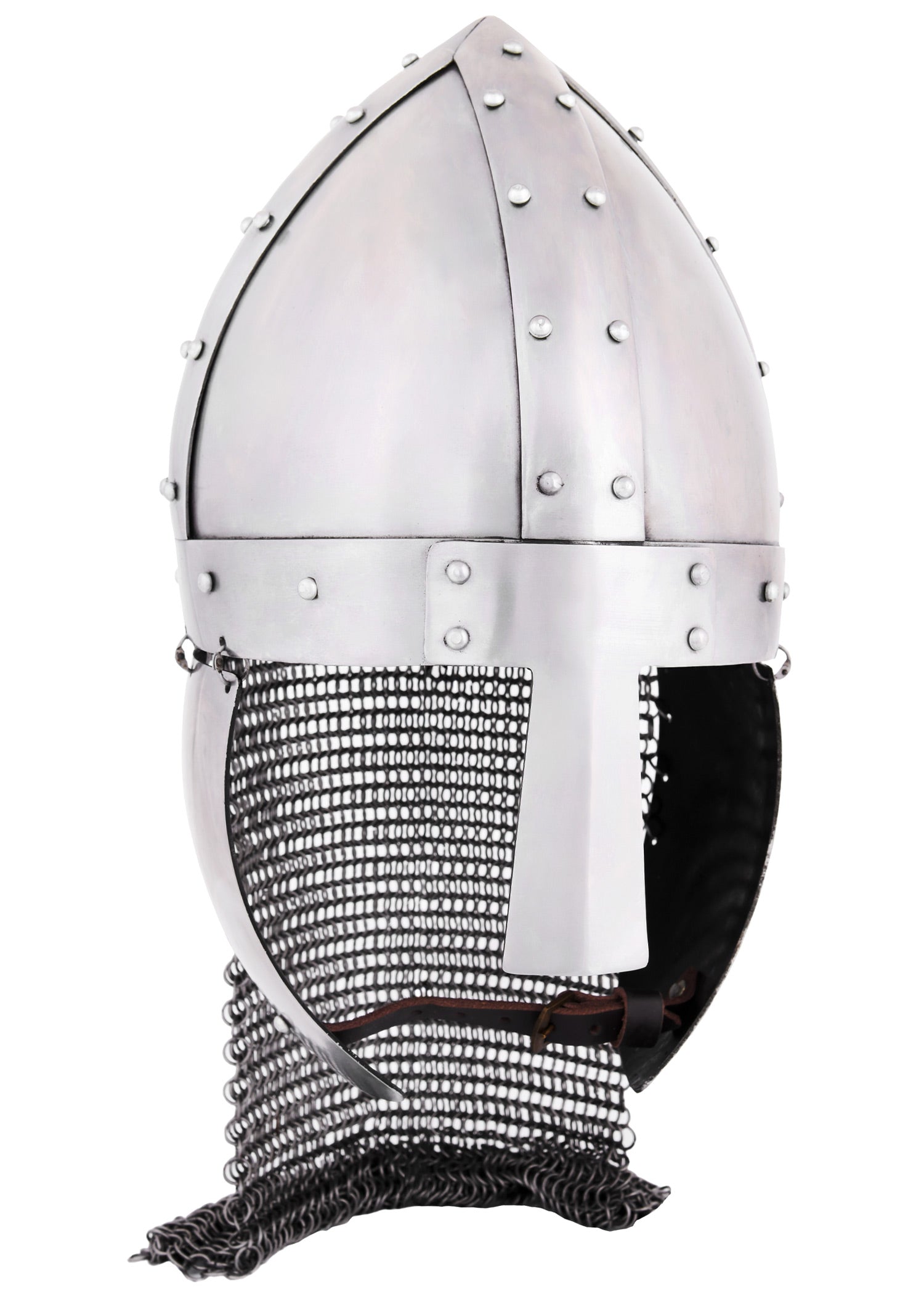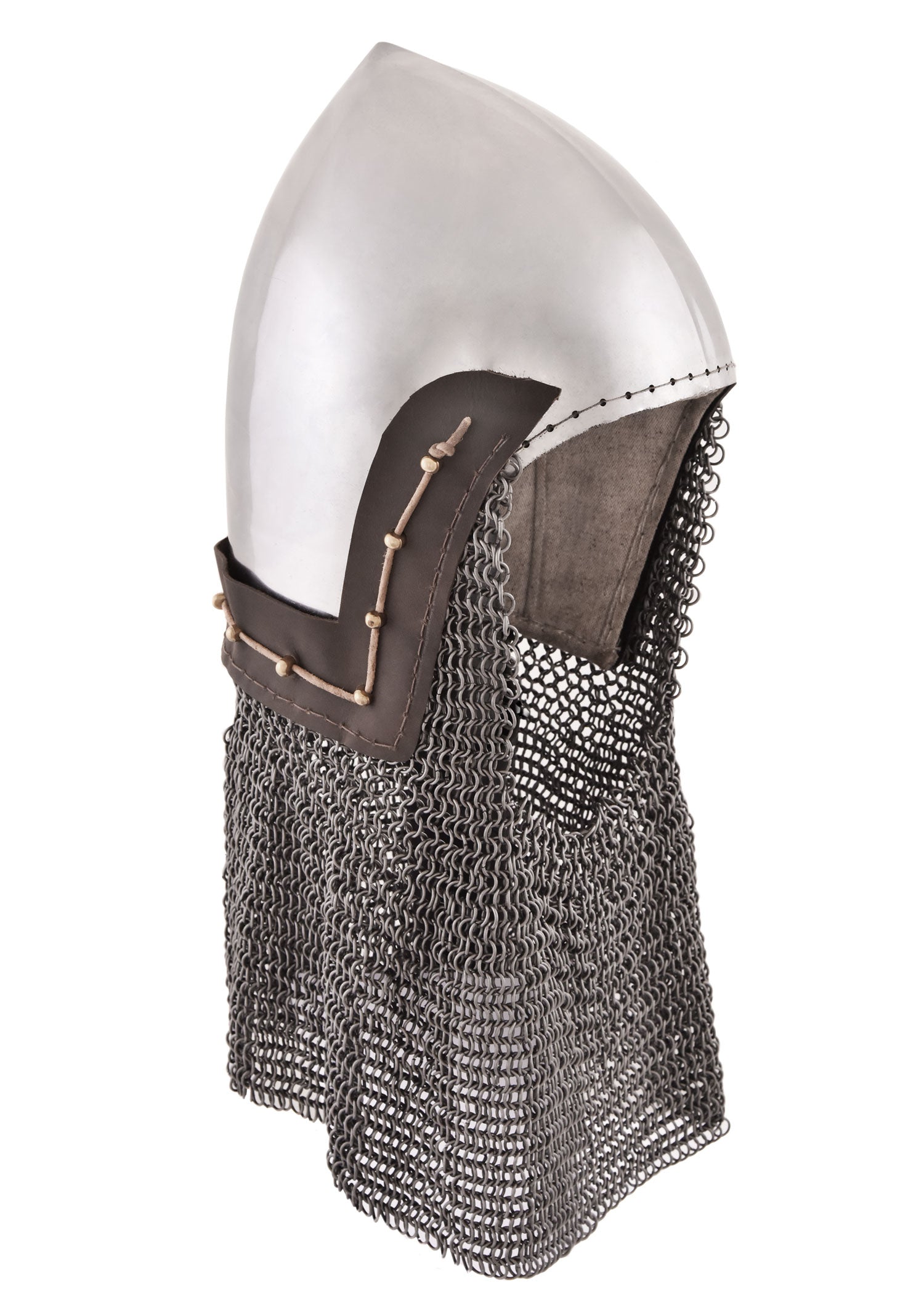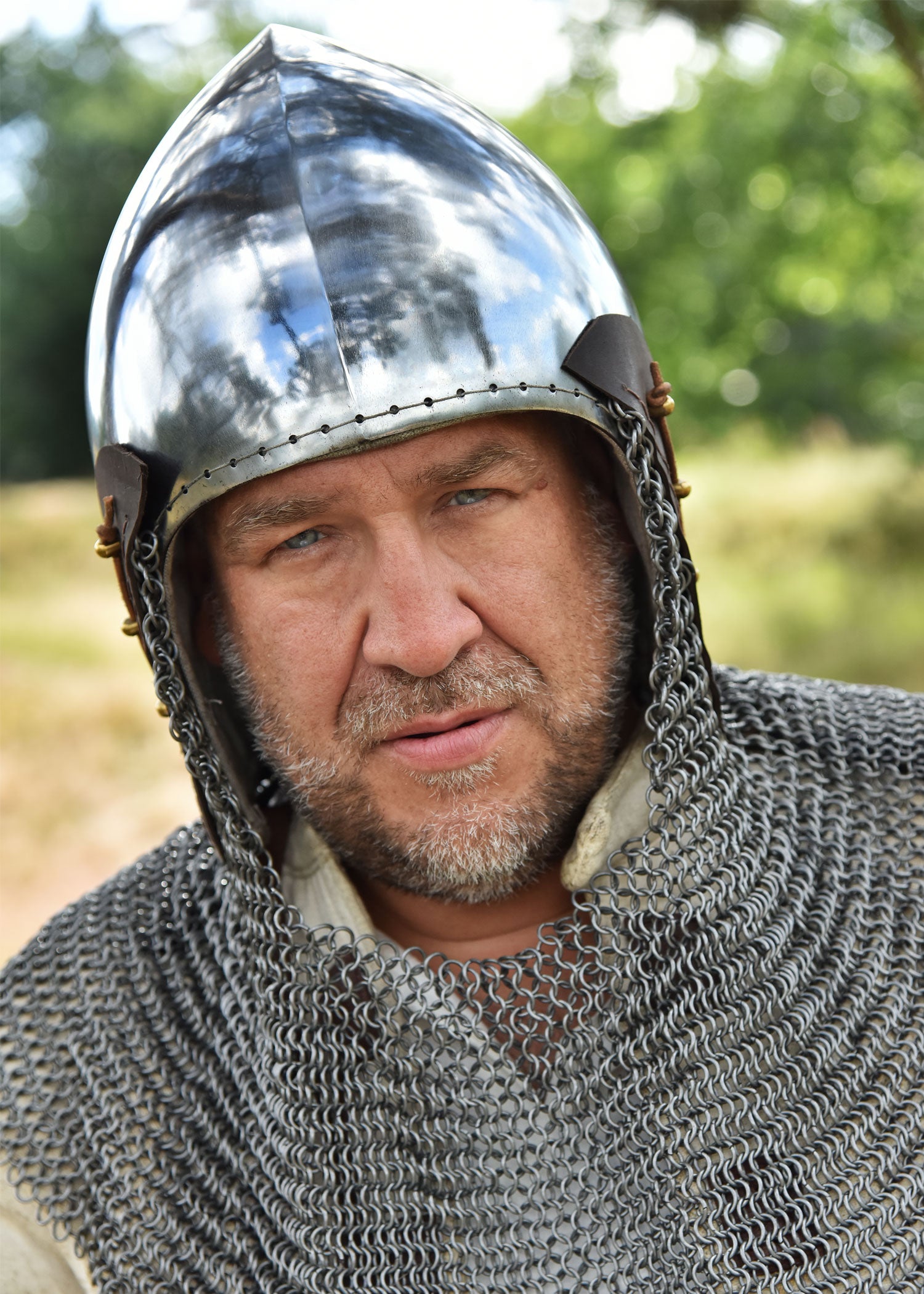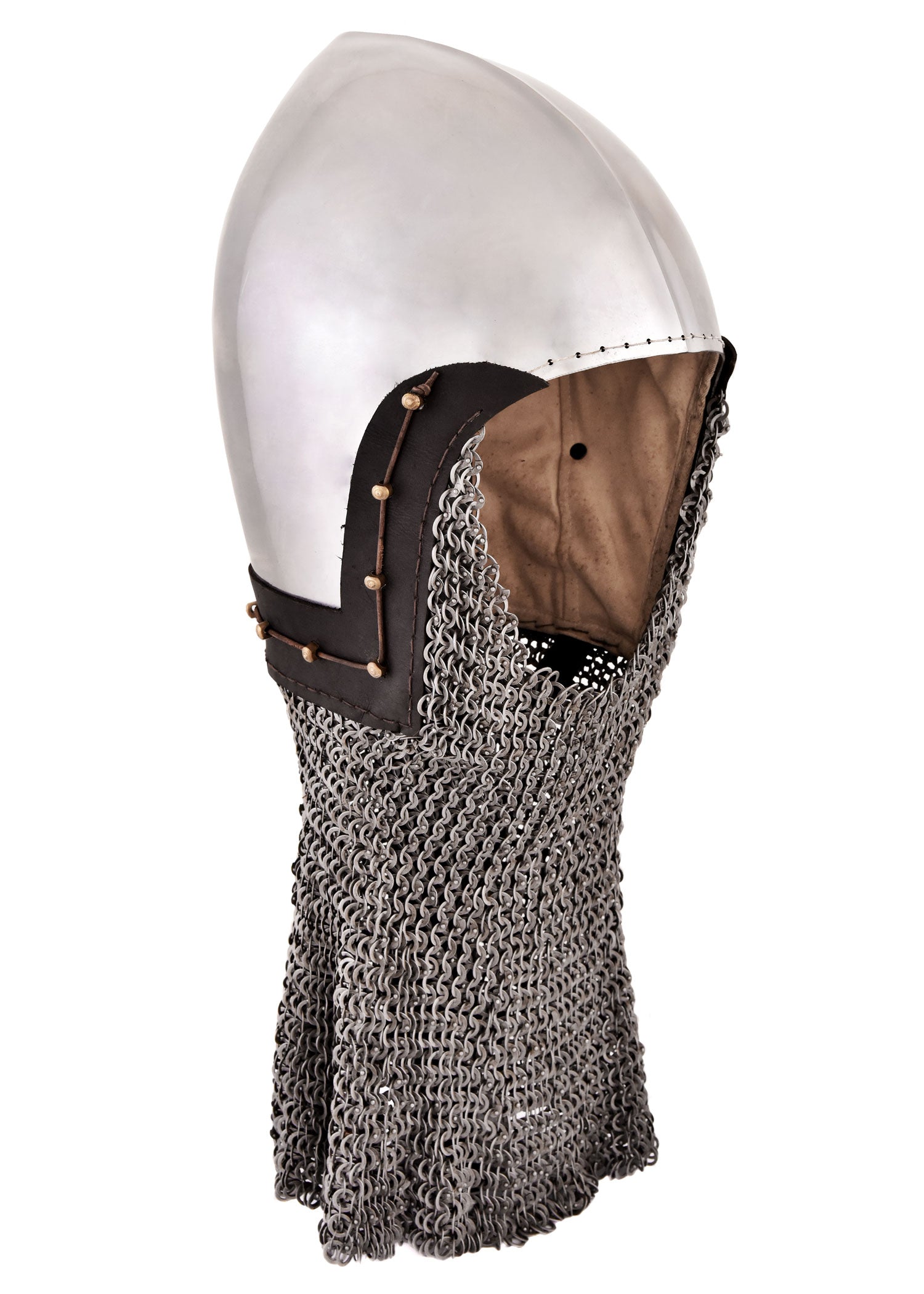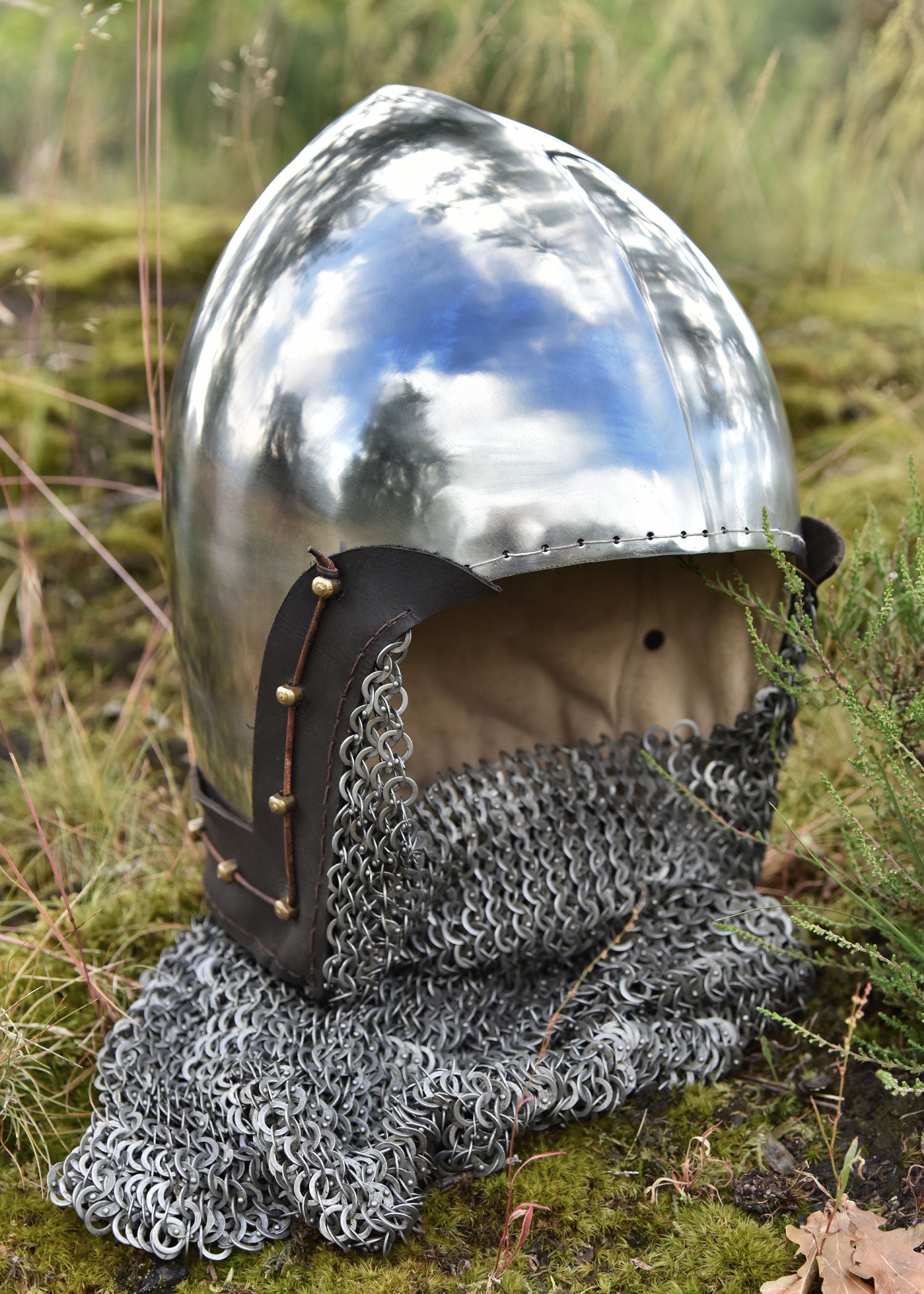Early Medieval Helmets: Protection and Style on the Battlefield
Early medieval helmets were essential for the defense of warriors and knights in combat. Designed for strength and functionality , they evolved over time to offer greater protection without sacrificing visibility or mobility. From the earliest Viking helmets to Norman models, each design had its strategic purpose.
Main types of helmets from the Early Middle Ages
- Spangenhelm : One of the most representative of the period, with reinforced structure and nose protector.
- Viking nose helmet : With a metal bar on the nose, it offers a combination of protection and good visibility.
- Norman helmet : Variant of the Spangenhelm, with a more stylized shape and adapted for combat on horseback.
- Almond helmet : Precursor of the medieval great helmet, with an oval shape to deflect blows.
Characteristics of helmets from the High Middle Ages
- Made of iron and steel : Strong and durable, ideal for war.
- Rivet-reinforced design : Increased protection without making the helmet too heavy.
- Partial nose bar or visor : Provided facial protection without limiting the field of vision.
- Padded inner lining : Improves comfort and absorbs impacts.
Medieval helmets were a symbol of status and survival on the battlefield. If you're looking for replicas of medieval helmets for historical reenactment, collecting, or medieval combat , you'll find authentic, high-quality models at Tienda Medieval .








